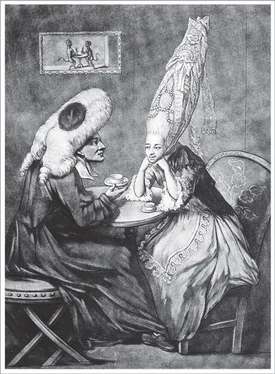Bill Bryson - At Home
Здесь есть возможность читать онлайн «Bill Bryson - At Home» весь текст электронной книги совершенно бесплатно (целиком полную версию без сокращений). В некоторых случаях можно слушать аудио, скачать через торрент в формате fb2 и присутствует краткое содержание. Жанр: Старинная литература, на английском языке. Описание произведения, (предисловие) а так же отзывы посетителей доступны на портале библиотеки ЛибКат.
- Название:At Home
- Автор:
- Жанр:
- Год:неизвестен
- ISBN:нет данных
- Рейтинг книги:4 / 5. Голосов: 1
-
Избранное:Добавить в избранное
- Отзывы:
-
Ваша оценка:
- 80
- 1
- 2
- 3
- 4
- 5
At Home: краткое содержание, описание и аннотация
Предлагаем к чтению аннотацию, описание, краткое содержание или предисловие (зависит от того, что написал сам автор книги «At Home»). Если вы не нашли необходимую информацию о книге — напишите в комментариях, мы постараемся отыскать её.
At Home — читать онлайн бесплатно полную книгу (весь текст) целиком
Ниже представлен текст книги, разбитый по страницам. Система сохранения места последней прочитанной страницы, позволяет с удобством читать онлайн бесплатно книгу «At Home», без необходимости каждый раз заново искать на чём Вы остановились. Поставьте закладку, и сможете в любой момент перейти на страницу, на которой закончили чтение.
Интервал:
Закладка:
Hare spent only a couple of months in prison before being released, though his fate was not a happy one. He took a job at a lime kiln, where his co-workers recognized him and thrust his face into a heap of quicklime, permanently blinding him. He is thought to have spent his last years as a wandering beggar. Some reports had him returning to Ireland, others place him in America, but how long he lived and where he was buried are unknown.
All this gave a great spur to an alternative way of disposing of bodies that was surprisingly controversial in the nineteenth century: cremation. The cremation movement had nothing to do with religion or spirituality. It was all about creating a practical way to get rid of a lot of bodies in a clean, efficient, and nonpolluting manner. Sir Henry Thompson, founder of the Cremation Society of England, demonstrated the efficacy of his ovens by cremating a horse at Woking in 1874. The demonstration worked perfectly but caused an outcry among those emotionally opposed to the idea of burning a horse or any other animal. In Dorset a certain Captain Hanham built his own crematorium and used it very efficiently to dispose of his wife and mother in defiance of the laws. Others, fearful of arrest, sent their loved ones to countries where cremation was legal. Charles Wentworth Dilke, the writer and politician who was one of the cofounders of Gardener’s Chronicle with Joseph Paxton, shipped his late wife to Dresden to be cremated in 1874 after she died in childbirth. Another early exponent was Augustus Henry Lane Fox Pitt Rivers, one of the nineteenth century’s leading archaeologists, who not only desired cremation for himself but insisted upon it for his wife, despite her continued objections. “Damn it, woman, you shall burn,” he declared to her whenever she raised the matter. Pitt Rivers died in 1900 and was cremated, even though it wasn’t yet legal. His wife outlived him, however, and was given the peaceful burial she had always longed for.
In Britain, on the whole, opposition remained entrenched for a long time. Many people thought the willful destruction of a corpse immoral. Others cited practical considerations. A point made often by opponents was that it would destroy evidence in cases of murder. The movement also wasn’t helped by the fact that one of its principal proponents was essentially mad. His name was William Price. He was a doctor in rural Wales noted for his eccentricities, which were exhaustive. He was a druid, a vegetarian, and a militant Chartist; he refused to wear socks or to touch coins. In his eighties he fathered a son by his housekeeper and named him Jesus Christ. When the baby died in early 1884, Price decided to cremate him on a pyre on his land. When villagers saw the flames and went to investigate, they found Price, dressed as a druid, dancing around the bonfire and reciting strange chants. Outraged and flustered, they stepped in to stop him and in the confusion Price snatched the half-burned baby from the fire and retired with the body to his house, where he kept it in a box under his bed until arrested a few days later. Price was brought to trial, but released when the judge decided that nothing he had done was conclusively criminal, since the baby was not actually cremated. He did, however, set back the cause of cremation very severely.
While cremation became routine elsewhere, it wasn’t formally legalized in Britain until 1902, just in time for our Mr. Marsham to exercise that option if he chose to. He didn’t.
* Truckle bed and trundle bed are two terms for the same thing. Truckle comes from the Greek trochlea , signifying something that slides, and trundle is related to the Old English words trindle and trendle , all meaning something that moves along by rolling. Truckle bed dates from 1459; trundle bed followed about a hundred years later.
• CHAPTER XVI •
THE BATHROOM
I
It would not be easy to find a statement on hygiene more wrong, or at least more incomplete, than this one by the celebrated architectural critic Lewis Mumford in his classic work The City in History , published in 1961:
For thousands of years city dwellers put up with defective, often quite vile, sanitary arrangements, wallowing in rubbish and filth they certainly had the power to remove, for the occasional task of removal could hardly have been more loathsome than walking and breathing in the constant presence of such ordure. If one had any sufficient explanation of this indifference to dirt and odor that are repulsive to many animals, even pigs, who take pains to keep themselves and their lairs clean, one might also have a clue to the slow and fitful nature of technological improvement itself, in the five millennia that followed the birth of the city.
In fact, as we have already seen with Skara Brae in Orkney, people have been dealing with dirt, rubbish, and wastes, often surprisingly effectively, for a very long time—and Skara Brae is by no means unique. A home of forty-five hundred years ago from the Indus Valley, at a place called Mahenjo-Daro, had a nifty system of rubbish chutes to get waste out of the living area and into a midden. Ancient Babylon had drains and a sewage system. The Minoans had running water, bathtubs, and other civilizing comforts well over thirty-five hundred years ago. In short, cleanliness and generally looking after one’s body have been important to a lot of cultures for so long that it is hard to know where to begin.
The ancient Greeks were devoted bathers. They loved to get naked—gymnasium means “the naked place”—and work up a healthful sweat, and it was their habit to conclude their daily workouts with a communal bath. But these were primarily hygienic plunges. For them bathing was a brisk business, something to be gotten over quickly. Really serious bathing—languorous bathing—starts with Rome. Nobody has ever bathed with as much devotion and precision as the Romans did.
The Romans loved water altogether—one house at Pompeii had thirty taps—and their network of aqueducts provided their principal cities with a superabundance of fresh water. The delivery rate to Rome worked out at an intensely lavish three hundred gallons per head per day, seven or eight times more than the average Roman needs today.
To Romans the baths were more than just a place to get clean. They were a daily refuge, a pastime, a way of life. Roman baths had libraries, shops, exercise rooms, barbers, beauticians, tennis courts, snack bars, and brothels. People from all classes of society used them. “It was common, when meeting a man, to ask where he bathed,” writes Katherine Ashenburg in her sparkling history of cleanliness, The Dirt on Clean . Some Roman baths were built on a truly palatial scale. The great baths of Caracalla could take sixteen hundred bathers at a time; those of Diocletian held three thousand.
A bathing Roman sloshed and gasped his way through a series of variously heated pools—from the frigidarium at the cold end of the scale to the calidarium at the other. En route he or she would stop in the unctorium (or unctuarium) to be fragrantly oiled and then forwarded to the laconium, or steam room, where, after the bather worked up a good sweat, the oils were scraped off with an instrument called a strigil to remove dirt and other impurities. All this was done in a ritualistic order, though historians are not entirely agreed on what that order was, possibly because the specifics varied from place to place and time to time. There is quite a lot we don’t know about Romans and their bathing habits—whether slaves bathed with free citizens, how often or lengthily people bathed, or with what degree of enthusiasm. Romans themselves sometimes expressed disquiet about the state of the water and what they found floating in it, which doesn’t suggest that they were all necessarily as keen for a plunge as we generally suppose them to be.
Читать дальшеИнтервал:
Закладка:
Похожие книги на «At Home»
Представляем Вашему вниманию похожие книги на «At Home» списком для выбора. Мы отобрали схожую по названию и смыслу литературу в надежде предоставить читателям больше вариантов отыскать новые, интересные, ещё непрочитанные произведения.
Обсуждение, отзывы о книге «At Home» и просто собственные мнения читателей. Оставьте ваши комментарии, напишите, что Вы думаете о произведении, его смысле или главных героях. Укажите что конкретно понравилось, а что нет, и почему Вы так считаете.












